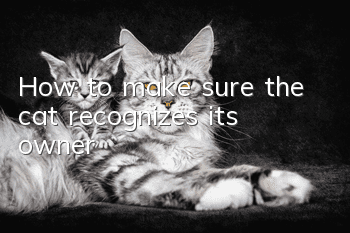How to treat otitis media in cats?

Otitis media rarely causes death of cats, but it has a serious impact on cats’ daily lives. Cats may suffer from poor spirits, loss of appetite, irritability, etc. due to severe itching, which affects their health.
Therefore, when a cat scratches its ears frequently, you should check whether there is any problem with the cat’s ears and consider whether to clean the cat’s ear canal regularly. If you have otitis media, it should be treated promptly.
What are the causes of otitis media in cats
Cleaning the cat’s ears is usually something that many owners ignore. However, if the cat’s ears are not cleaned for a long time, it may cause inflammation, leading to otitis media. It can be seen that the daily cleaning and care of the ears must not be careless.
Otitis media in cats is mostly caused by otitis externa, which is mainly caused by bacteria, ear itch mites and fungal infections. Bath water entering the ears is a common cause, and it can also be caused by blood-borne infection. Generally, middle ear and otitis interna occur simultaneously.
This disease is a common and frequently-occurring disease among cat ear diseases. This is due to the special physiological and anatomical structure of the middle ear cavity. That is, the middle ear cavity is connected to the nasopharynx through the Eustachian tube. Therefore, when you suffer from respiratory inflammation, the infection can easily spread to the Eustachian tube, and bacteria entering the middle ear cavity through the Eustachian tube can also cause otitis media.
What are the symptoms of otitis media in cats
Due to bacterial infection, when a cat suffers from otitis media, it will cause ear itching, which will cause the cat to scratch its own ears from time to time. In severe cases, it will cause ear bleeding. Moreover, cats may suffer from itching, which may affect their appetite and lead to weight loss.
Cats suffering from otitis media usually show symptoms such as irritability, loss of appetite, slow response to external stimuli, reluctance to move, fatigue, itchy ears, and constant pulling of the ears with the front hooves. Most cats have no abnormal symptoms in body temperature, pulse, and respiration. During ear examination, serous, mucus, and sometimes thick and dirty purulent fluid is found to flow out of unilateral or bilateral ear holes, with a special fishy odor. Some individuals have gastrointestinal symptoms, including vomiting, diarrhea, constipation, and decreased appetite.
Treatment methods for cat otitis media:
1. Local therapy: wash the ears with 3% hydrogen peroxide, clean the ear canal, and remove dirt twice a day; keep the Eustachian tube cavity open, plug the ear holes with chloramphenicol ear drops and instill chlorine Mycin eye drops.
2. Antibiotic therapy: Use sufficient systemic antibiotic therapy. Penicillin 800,000 units/time, gentamicin 80,000 units/time, intramuscular injection twice daily. Cat otitis media uses conservative therapy, cleans the ear canal, keeps the Eustachian tube cavity open, uses systemic antibiotics, and anti-infective therapy, and is basically cured after about two weeks of treatment.
3. Systemic application of antibiotics
4. In more severe cases, infusion can be used to supplement nutrients and electrolytes.
- What breed is the elf cat?
- How to choose a more suitable freeze-dried cat food for cats?
- Can the incubation period of cat plague last 20 days without getting sick?
- How to choose a Devon Curl Cat_Habits and Characteristics_Raising and Price
- What should I do if the male cat doesn’t mate?
- Why do kittens suddenly vomit?
- Can cats be dewormed internally and externally at the same time?
- Are Siamese cats clingy?
- Why does Garfield need to be neutered?
- Things to pay attention to when bathing Garfield cats



